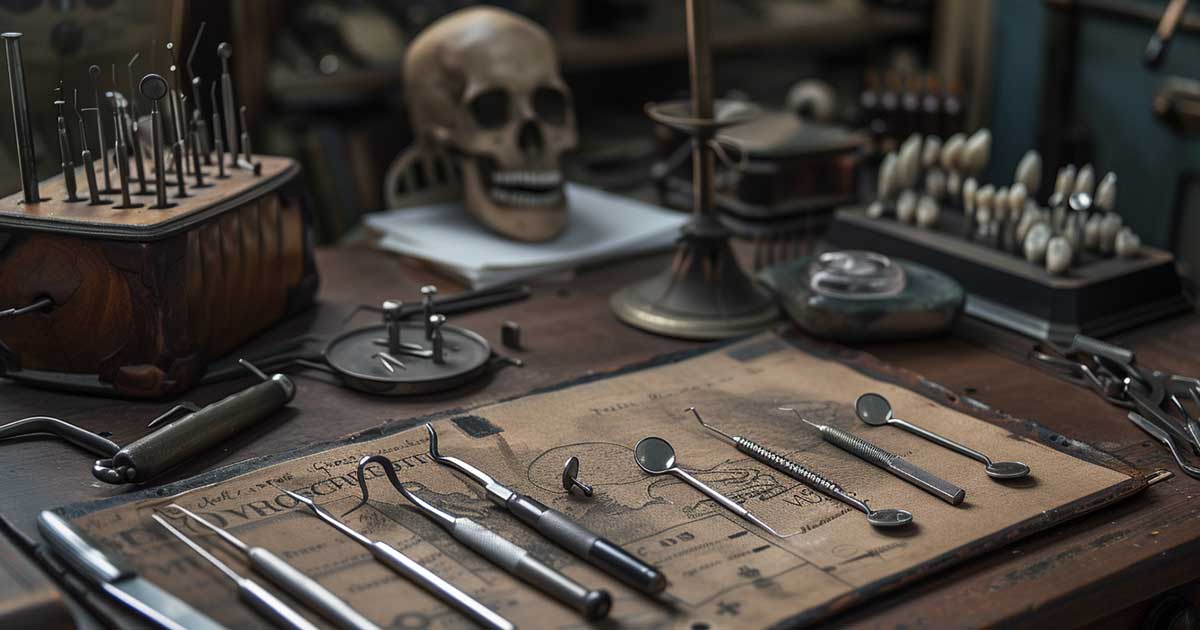Introduction
The history of dentistry is an intriguing tapestry woven across the epochs, revealing the remarkable evolution of dental care tools. As we embark on this exploration, we find ourselves journeying back to ancient civilizations where ingenious yet rudimentary instruments laid the groundwork for the oral health practices we recognize today. This comprehensive article delves deeply into the early years of dental care tools, examining the evolution of oral health practices, and the resourceful methods our ancestors employed to maintain their teeth and gums.
The Ancient Civilizations
Mesopotamia and Egypt
Our voyage begins in the cradle of civilization, Mesopotamia, and the ancient land of Egypt. Archaeological findings unearthed in these regions provide glimpses into the oral health concerns of our early ancestors. It appears that even in these ancient times, individuals were attuned to the importance of oral hygiene. Simple yet effective tools such as chew sticks and primitive toothpicks were employed for teeth cleaning. Furthermore, concoctions resembling early forms of toothpaste, composed of crushed oxen hooves and ashes, were used for oral maintenance. These discoveries hint at a conscientious effort to combat tooth decay and preserve dental health.
Greco-Roman Influence
The pages of dental history turn to the classical civilizations of Greece and Rome, where the foundations of dental care were further refined. Esteemed scholars like Hippocrates and Aristotle contributed their insights to oral hygiene, emphasizing the necessity of maintaining clean teeth. Dental instruments progressed beyond the rudimentary, with the introduction of scalers and forceps for tooth extraction. Various herbs and pastes were recommended for cleaning and refreshing the breath, underscoring a growing awareness of dental health in these ancient societies.
Medieval Practices
Islamic Golden Age
As our historical journey unfolds, we find ourselves in the Islamic Golden Age, a period marked by intellectual flourishing and scientific advancements. Influential figures such as Al-Razi and Avicenna made significant contributions to dental literature, delving into dental diseases and treatments. During this era, tools like toothpaste and the miswak stick, a precursor to the modern toothbrush, gained prominence. The Islamic world became a crucible for preserving and expanding the knowledge of ancient dental practices, leaving an indelible mark on the evolution of oral care.
European Middle Ages
The medieval epoch introduces us to a different facet of dental care, one often entwined with superstitions and mysticism. Barber-surgeons, multifaceted medical practitioners responsible for an array of procedures, including dental extractions, became prevalent. Toothaches, in this era, were sometimes attributed to spiritual causes, leading to practices like tooth pulling during specific moon phases. Despite the lack of scientific understanding, various instruments for tooth extraction and cleaning emerged, reflecting the continual adaptation of dental care tools to the beliefs and practices of the time.
Renaissance and Early Modern Era
The Age of Enlightenment
The Renaissance, a period synonymous with intellectual awakening, witnessed a renewed interest in science and a more systematic approach to medicine, including dentistry. Visionaries like Ambroise Paré and Pierre Fauchard emerged as trailblazers, contributing to the development of dental instruments and techniques. Fauchard, hailed as the "Father of Modern Dentistry," penned the seminal work "Le Chirurgien Dentiste," a comprehensive treatise that provided insights into tooth anatomy and outlined effective oral care practices.
18th Century Innovations
The 18th century ushered in notable developments in dental care tools, marking a departure from the instruments of earlier centuries. Dental pelicans, devices used for tooth extraction, underwent refinement, becoming more precise and less invasive. Innovations in materials allowed for the creation of more durable and precise instruments, setting the stage for the transformative changes that would define dentistry in the centuries to come. Additionally, the creation of the first dental chair during this period signified a commitment to patient comfort, marking a shift towards a more patient-centered approach to dental care.
Conclusion
As we conclude this comprehensive exploration of the early years of dental care tools, we find ourselves standing at the crossroads of history, marveling at the ingenuity and resourcefulness of our ancestors. From the rudimentary implements of ancient civilizations to the more sophisticated instruments of the Renaissance, each era has contributed to the mosaic of modern dentistry. The foundations laid by these early pioneers continue to shape the practices of contemporary oral health professionals, underscoring the enduring importance of dental care.
The journey through time reminds us that the evolution of dental care tools is not merely a historical account but a testament to human resilience, adaptability, and the unyielding pursuit of better health. As we reflect on the early chapters of this odyssey, we gain a deeper appreciation for the strides taken in dentistry and a heightened awareness of the ongoing quest for optimal oral health. The story of dental care tools is not confined to the annals of history; it is a living narrative, continuously unfolding with each new innovation and discovery, shaping the smiles of generations to come.


Share:
Understanding Bamboo as a Material
Dental Caries Prevention: Tips and Tricks for a Healthy Smile